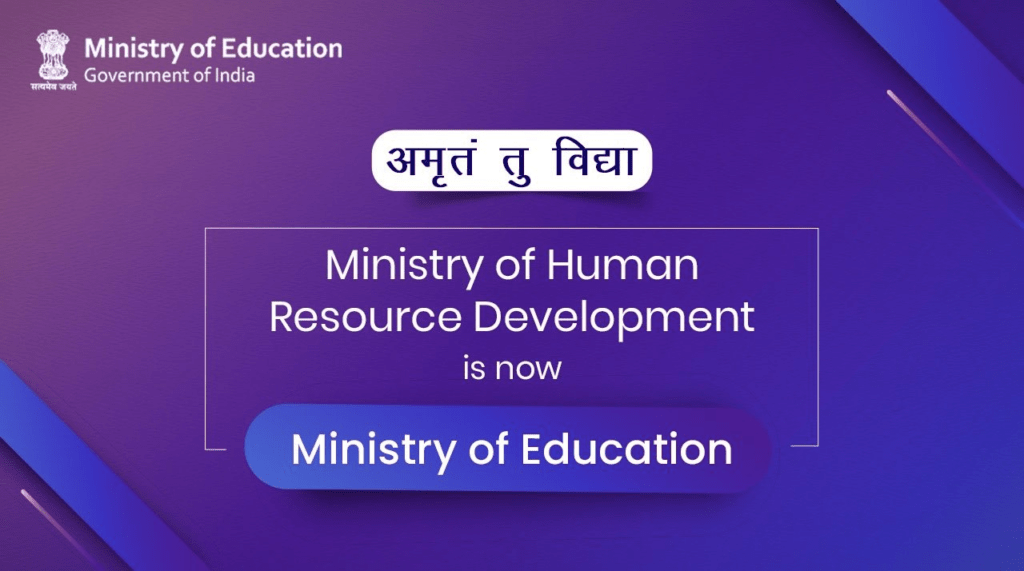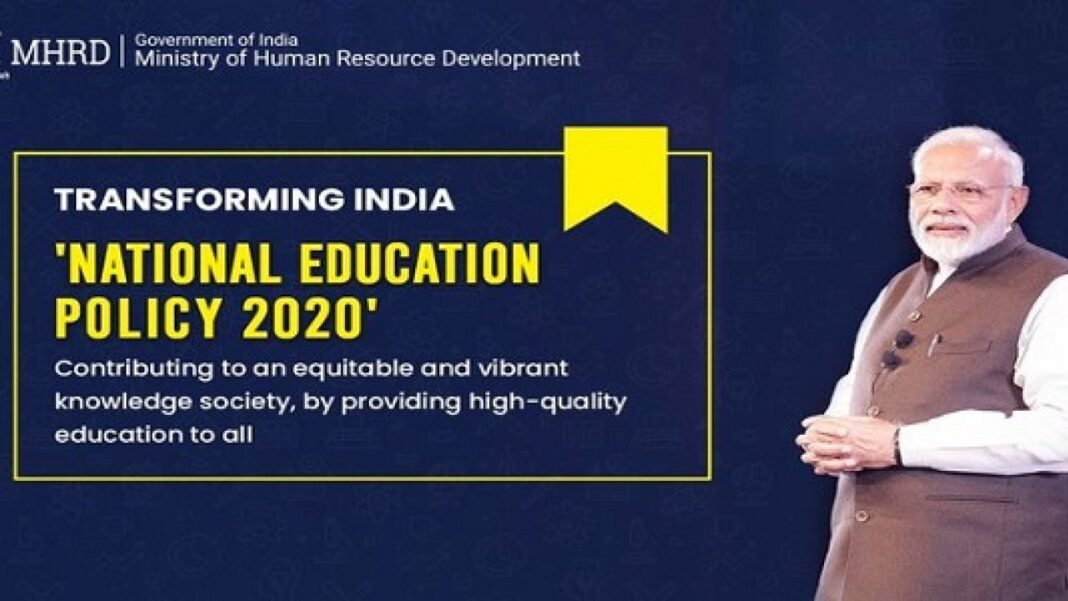INDONESIA. Medan. After 34 years, India has come out with a new National Education Policy (NEP) that can be characterized as not only bold, innovative, and imaginative but practical and scientific.
This new policy comes after almost three decades and post deliberation of nearly six years. This is the third NEP after policies in 1968 and 1986. Though the government amended the 1986 policy in 1992, there were no significant changes.
The NEP is futuristic in its orientation and vision and is expected to set the roadmap for the education sector to stay relevant to the employment market. It is also expected to keep pace with societal changes and revolutionize some basic concepts of Indian education that aims to overhaul the country’s education system.
It aims for universalization of education from pre-school to secondary level with 100 percent Gross Enrollment Ratio (GER) by 2030 and to raise GER in higher education to 50 percent by 2025. The policy aims to achieve 100 percent literacy throughout India.
In an interview with Transcontinental Times, Raghu Gururaj, Consul General of India to Sumatra in Medan, said, “NEP renames the Ministry of Human Resource Development as the Ministry of Education. The NEP contains several policies that more or less overhaul the current educational system. But the major provisions of the NEP are explained below:”
Key change: Shift to a 5+3+3+4 structure from existing 10+2
Simply put, a student in India at the moment typically enters formal education at the age of 3 through playschools. He/she then moves to a ‘school’ which is a K-12 institution, then leading to higher secondary education. The new structure divides school into cognitive developmental stages. In other words, the new 5+3+3+4 structure takes note of the ability of the child and attempts to walk through the stages of cognitive, social, and emotional development.
While the actual system would not change several years a child spends within the formal education system in the country at the school level, the new structure adds playschools within the ambit of ‘formal education’, bringing three to six-year-olds under formal school curriculum.
Changes in examination structure: Measuring 360-degree holistic progress
Another key aspect of the NEP is the large-scale change in the examination structure and schedule. Under the NEP, instead of just one board, a more modular model is being explored, which is expected to be in place by 2022-23.
Instead of exams being held every year, students will now sit for only three exams: at grades 3, 5, and 8 to track the development of the child. Assessment in other years will shift to a “regular and formative style that is more competency-based, promotes learning and tests higher-order skills, such as analysis, critical thinking and conceptual clarity.”
Board exams will continue to be held for grades 10 and 12, but even these will be re-designed with “holistic development”, so that core capability is also tested. In other words, these exams will be low stakes & test actual knowledge instead of rote learning. Standards for this will be established by a new national assessment center – PARAKH (Performance Assessment, Review, and Analysis of Knowledge for Holistic Development). Knowing that assessment report cards will now be a comprehensive report on skills and capabilities instead of just marks and statements, Indian parents will be greatly relieved of the pressure on “grades.”
Changes to pedagogical structure
Teaching content is a key aspect of these reforms. The revised mandated content will focus on key concepts, ideas, applications, and problem-solving. Teaching and learning will be conducted in a more interactive manner that will focus on the idea, application, and problem-solving. With an emphasis on experiential learning, there is a clear nudge towards hands-on learning, arts-integrated and sports-integrated education, and story-telling-based pedagogy. Classroom transactions will shift toward competency-based learning and education.
Curriculum content to be reduced
Curriculum content will be reduced in each subject to its core essentials, and make space for critical thinking and more holistic, inquiry-based, discovery-based, discussion-based, and analysis-based learning.
No rigid separation between arts and sciences, curricular and extra-curricular activities, and between vocational and academic streams
To reduce the curriculum load of students and to empower them to become more “multi-disciplinary” and “multi-lingual”, the NEP will do away with the strict watertight compartmentalization between academic disciplines. Students will be given increased flexibility and choice of subjects to study, particularly in secondary school.
To that end, the policy also proposes that higher education institutions like the Indian Institutes of Technology (IIT), move towards “holistic education” by 2040 with greater inclusion of arts and humanities subjects for students studying the sciences, and vice versa.
There will be multiple entry and exit options for those who wish to leave the course in the middle. Their credits will be transferred through Academic Bank of Credits (ABC) which will digitally store the academic credits earned by students.

Common Entrance Exam
The National Testing Agency (NTA) will offer a high-quality common aptitude test, as well as specialized common subject exams in the sciences, humanities, languages, arts, and vocational subjects, at least twice every year for university entrance exams.
Introduction of 4-Year undergraduate programme
The policy proposes a 4-year undergraduate program with multiple exit options to give students flexibility. A multi-disciplinary bachelor’s degree will be awarded after completing four years of study. Students exiting after two years will get a diploma and those leaving after 12 months will have studied a vocational/professional course. MPhil (Master of Philosophy) courses are to be discontinued.
Focus on vocational studies
Under this policy, a student is expected to learn at least one vocational craft, such as carpentry, electric work, metalwork, gardening, pottery making, etc. as decided by states during Grades 6-8.
The objective is that by 2025, at least 50% of learners would have gain useful exposure to vocational education. Another proposal is a 10-day period during Grades 6-8 to intern with local vocational experts. Vocational courses through online modes will also be available.
Flexibility in medium of Instruction
The NEP recommends the mother tongue or local or regional language to be the medium of instruction in all schools up to Class 5 (preferably till Class 8 and beyond), according to the policy. Under the NEP 2020, Sanskrit will be offered at all levels and foreign languages from the secondary school level. However, the policy also says “no language will be imposed on any student”. The emphasis on mother tongue as a medium of instruction is to ensure that children learn and grasp non-trivial concepts more quickly in their mother tongue. There will e-content in regional languages apart from English and Hindi.
The new academic standard for teachers – A 4 year integrated B.Ed degree
The policy has prescribed the formulation of a new comprehensive National Curriculum Framework for Teacher Education, NCFTE 2021. By 2030, the minimum degree qualification for teaching will be a 4-year integrated B.Ed. degree, a move aimed at increasing the quality of teachers and teaching methods.
A national regulatory body
The Higher Education Commission of India (HECI) will be set up as a single overarching common umbrella body for entire higher education, excluding medical and legal education. HECI will have four independent verticals: National Higher Education Regulatory Council (NHERC) for regulation, General Education Council (GEC ) for standard-setting, Higher Education Grants Council (HEGC) for funding, and National Accreditation Council (NAC) for accreditation. The focus will be on institutions that have 3,000 or more students. Among its goals is to increase the gross enrollment ratio from 26.3 percent (2018) to 50 percent by 2035.
Dedicated unit for digital and online learning
The new policy envisages the establishment of dedicated digital infrastructure to take into account the proposed new digital content and capacity building online programs. Such a digital infrastructure will be created to look after the e-education needs of both school and higher education. A comprehensive set of recommendations for promoting online education consequent to the recent rise in epidemics and pandemics to ensure a measure of preparedness to handle alternative modes of quality education has been included.
India a global knowledge superpower
The NEP also aims at promoting India as a global study destination providing premium education at affordable costs. An International Students Office at each institution hosting foreign students will be set up. High performing Indian universities will be encouraged to set up campuses in other countries. Similarly, selected universities like those from among the top 100 universities in the world will be facilitated to operate in India.
Read also The Rise Of Online Education During The Pandemic
Phased implementation
The NEP aims to revive aspects of the Indian education system and create a reformed system that is aligned with 21st-century education goals while keeping intact India’s traditions and value systems. The slew of changes proposed is transformational in nature and not incremental.
The NEP only provides a broad guideline and lays down a philosophy. In India, since education falls under concurrent departments (both federal and state jurisdictions), the reforms proposed can only be implemented collaboratively.
For starters, the government will set up subject-wise committees with members from relevant ministries at both the central and state levels to develop implementation plans for each aspect of the NEP. The plans will list specific actions to be taken by multiple bodies, including the Education Ministry, state education departments, school boards, and other educational entities. Planning will be followed by a yearly joint review of progress against targets set.
The government has set a target of 2040 to implement the NEP in its entirety. Continuous and sufficient funding is a crucial aspect in its implementation.



